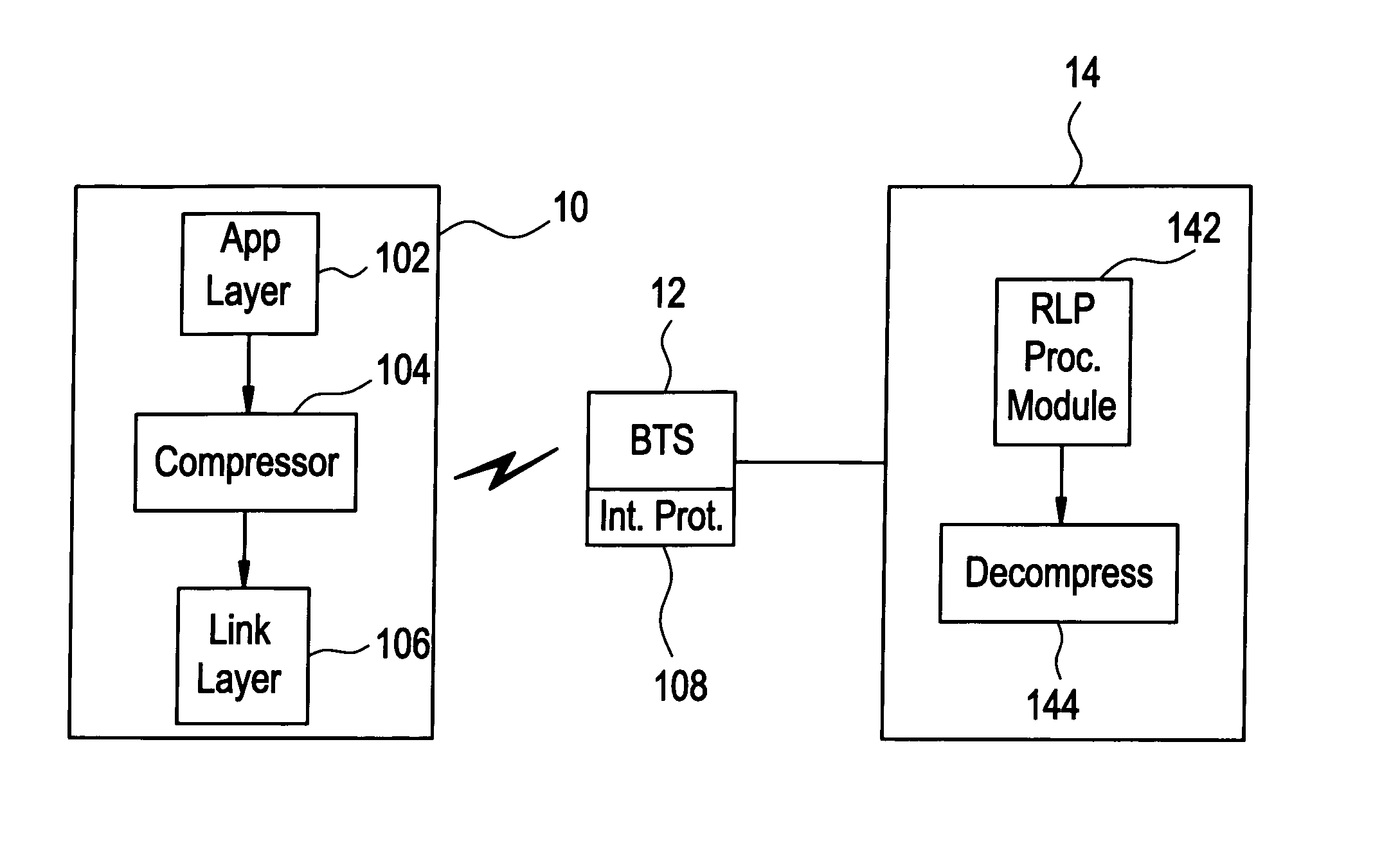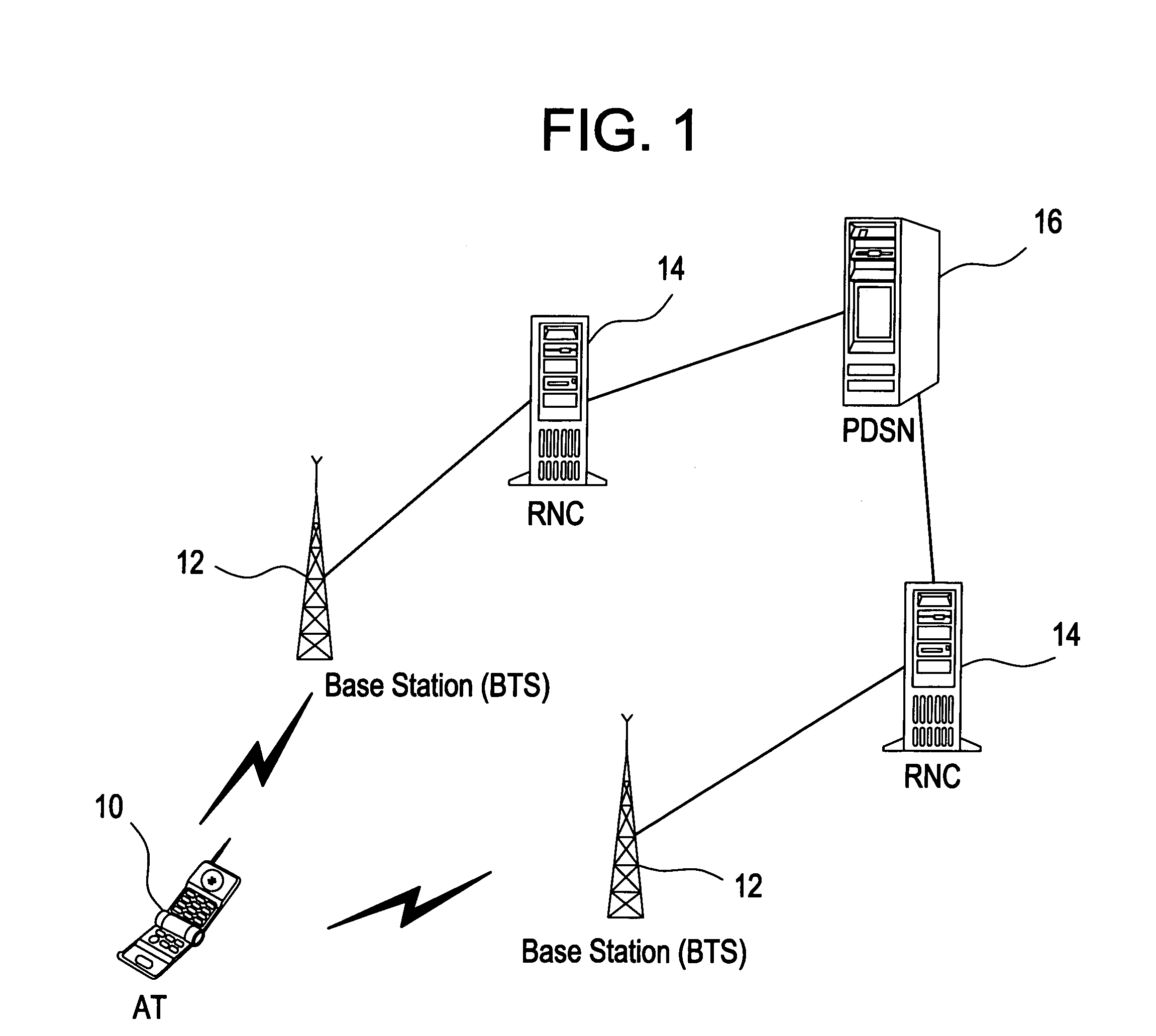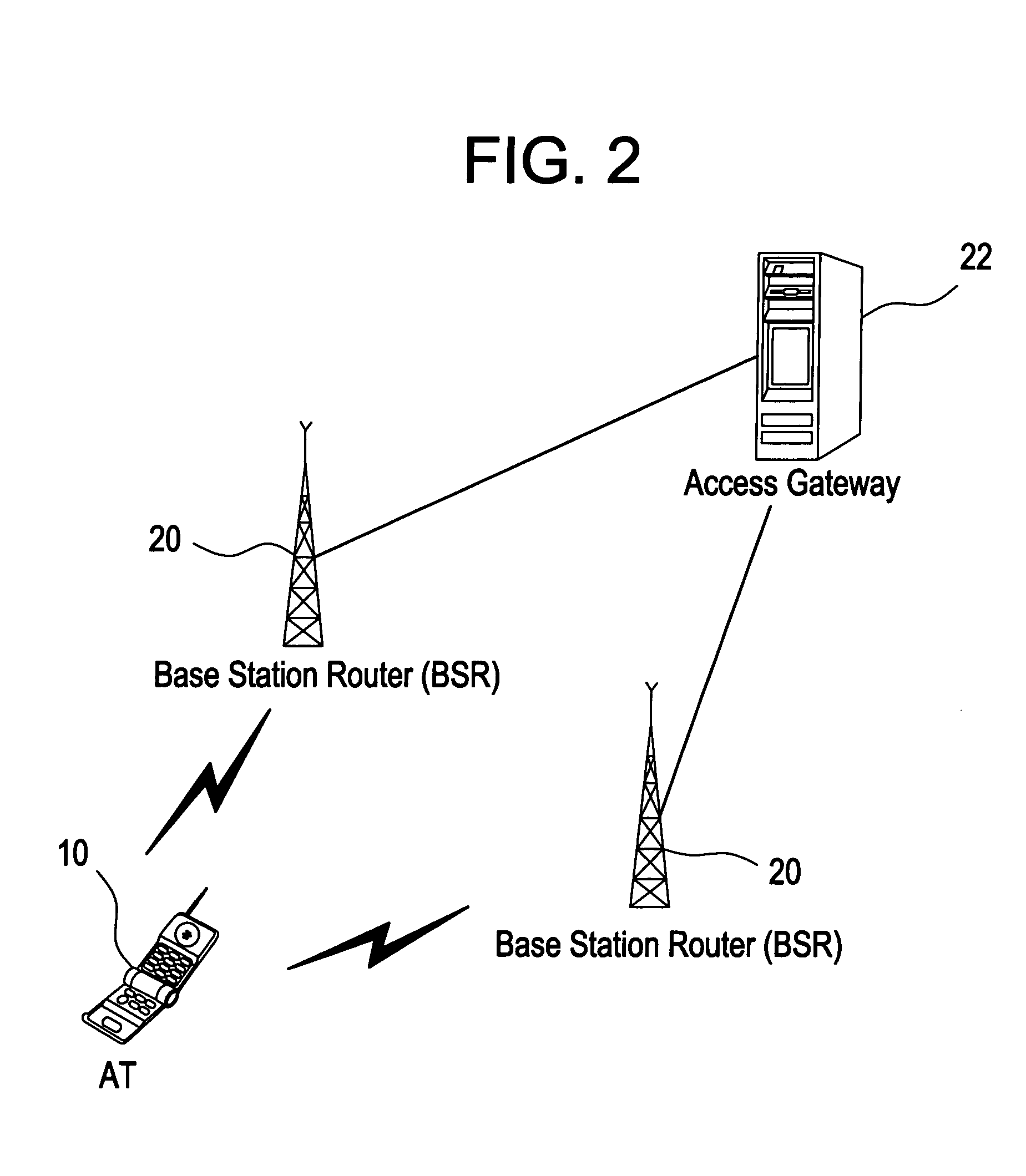Header compression in a wireless communication network
a wireless communication network and header compression technology, applied in multiplex communication, data switching networks, instruments, etc., can solve the problems of decompressors not being able to decompress newly received packets, decompressors losing context, current header compression schemes have some drawbacks, etc., to achieve the effect of improving header compression/decompression
- Summary
- Abstract
- Description
- Claims
- Application Information
AI Technical Summary
Benefits of technology
Problems solved by technology
Method used
Image
Examples
Embodiment Construction
[0021]Referring to FIG. 1 discussed above, data packet transmissions over the link layer of the wireless network contain information to ensure packet delivery and processing at the RAN. For example, the radio link protocol (RLP) layer at a transmitter encapsulates the RoHC packet and provides a sequence number (SN) in an RLP header for packet delivery. The sequence number is incremented for each RLP packet transmission, and therefore, provides a mechanism for properly ordering packets received out-of-order at the receiver. This mechanism may also be used to recognize missing data packets.
[0022]Furthermore, the interface over the backhaul between the BTS 12 and RNC 14 adds another protocol (hereinafter “BTS / RNC interface protocol”) for encapsulating the RLP packets. More specifically, the BTS / RNC interface protocol maintains timing information (e.g., a time stamp) on when RLP packets are sent between the BTS and the RNC. On the reverse link, this timing information represents the tra...
PUM
 Login to View More
Login to View More Abstract
Description
Claims
Application Information
 Login to View More
Login to View More - R&D
- Intellectual Property
- Life Sciences
- Materials
- Tech Scout
- Unparalleled Data Quality
- Higher Quality Content
- 60% Fewer Hallucinations
Browse by: Latest US Patents, China's latest patents, Technical Efficacy Thesaurus, Application Domain, Technology Topic, Popular Technical Reports.
© 2025 PatSnap. All rights reserved.Legal|Privacy policy|Modern Slavery Act Transparency Statement|Sitemap|About US| Contact US: help@patsnap.com



